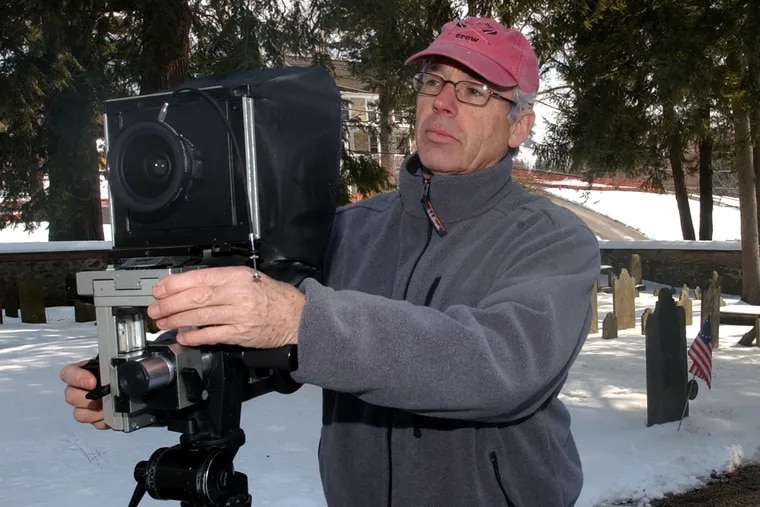[ad_1]
Ralph Thompson Crane III, 82, of Bryn Mawr, retired prolific architectural and interior photographer, Peace Corps volunteer, and self-described “obsessive handyman,” died Jan. 9, of multiple system atrophy at St. Francis Center For Rehabilitation and Healthcare in Darby.
Known professionally and by his family and friends as Tom, Mr. Crane’s photographs were published in many publications, including The Inquirer, for decades. His work is also found in books, online, and elsewhere, and he teamed with writer Roger W. Moss to publish Historic Houses of Philadelphia in 1998, Historic Sacred Places of Philadelphia in 2004, and Historic Landmarks of Philadelphia in 2008.
Reviewers praised the Philadelphia books, which feature hundreds of Mr. Crane’s photos and detailed descriptions of the sites by Moss, as a “a feast to our eyes” and “a wondrous visual and historical tour of the city’s major places.” A reviewer for Maine Antique Digest said in 1998: “Tom Crane’s glorious photographs and Roger Moss’s enthusiastic descriptions will get anyone with the slightest interest in history, architecture, or the decorative arts on the way to spending a week in the City of Brotherly Love.”
Shadow and vibrancy, brilliance and contrast, were his tools of the trade, Mr. Crane told The Inquirer in 2005. “My whole being, my mode of operation, is determined by light,” he said.
Moss, former executive director of the Athenaeum of Philadelphia, said in 2005 that he agreed to write the text for the books only because Mr. Crane provided the photographs. “The idea of expanding to three books came solely out of working with Tom,” Moss said. “It’s like the collaboration between a librettist and a composer. … Tom and I just work well together.”
Mr. Crane became interested in architectural photography in 1966 while serving two years in the Peace Corps after college. Working with Dutch soil scientists on a survey of floodplains in Nigeria, he was intrigued by the architectural designs of buildings along the Niger River, and, using a simple Kodak camera, returned to the United States in 1967 with an eclectic portfolio of amateur photos.
That collection was enough to earn him an apprenticeship with celebrated architectural photographer Ezra Stoller in New York. Two years later, he became studio manager for photographer and filmmaker Hans Namuth. He moved to Philadelphia in 1971, opened his own studio, learned on the job, and refurbished an old barn in Bryn Mawr in the early 1980s into a studio, office, and home.
Mr. Crane was a board member of the Philadelphia Chapter of the Institute of Classic Architecture and Art, and his lifetime body of work was honored at the institute’s 2022 Trumbauer Awards gala in November. He conducted workshops over the years, lectured widely about photography, and welcomed interns from Drexel University into his studio.
“His work, energy, and spirit are always an inspiration,” a friend said in a tribute.
Born Nov. 26, 1940, in Montclair, N.J., Ralph T. Crane III graduated from Deerfield Academy in Massachusetts and earned a bachelor’s degree in American studies at George Washington University in Washington in 1965.
He married Kenni Durkin, and they divorced. He married Anne Loring, and they had sons Henry and Nelson. They divorced, and he met Diana Mizer in 2004. They married in 2011, and he welcomed her daughters, Abigail and Jessica, into his family.
Fascinated by the design and functions of mechanical objects as well as architecture, Mr. Crane fiddled with reclining bicycles, collapsible kayaks, radio-controlled indoor aircraft, aerobatic kites, and other items. He hung a trapeze and built a scenery cyclorama in his photo studio, mounted a rowing machine on exposed beams of his living room ceiling, and had handmade wood furniture and an open-air atrium in his home.
He used a Swiss-made Sinar view camera on a tripod for years. Later, as computer software flooded the photography market, he picked up editing tricks from his interns. “I’m so dependent on them it’s scary,” he said in 2005. “Today’s technology is capable of making Ansel Adams’ eight-by-tens look like a Kodak print.”
People who knew Mr. Crane, his wife said, “came away with a sense of his intense work ethic, incomparable eye for making a photo fully readable, and an understanding of what loving energy made that happen.”
She said: “He complemented that professional competence with a humorous, delightful playfulness that was addictive to be around. He was my wonderful man.”
In addition to his wife, children, and former wives, Mr. Crane is survived by a sister and other relatives. A brother died earlier.
Services were private.
Donations in his name may be made to the New York Times Neediest Cases Fund, P.O. Box 5193, New York, N.Y. 10087.
[ad_2]
